News
Why does SpaceX market space better than NASA?
NASA may be truly making progress, but when compared to SpaceX, it seems more like thus far, they just have a guitar amp that “goes to 11”.
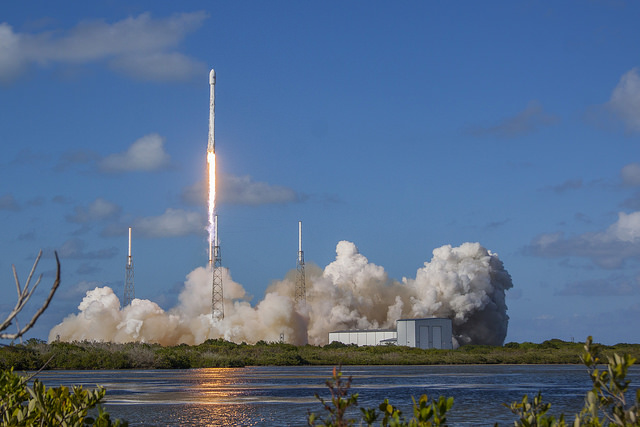
Unless you live under a rock (where exactly are these rocks, anyhow?), you’ve heard the news that SpaceX completed the 4th successful first stage landing of its Falcon 9 rocket after launching to a very high orbit. This was the third one in a row to land on an oceangoing droneship, setting the event up for a pathway to becoming routine business.
Waiting for Falcon 9 at the Park
I was in Florida last week and had the opportunity to go to Jetty Park in Cape Canaveral to watch the launch on its first scheduled date of Thursday, May 26th.
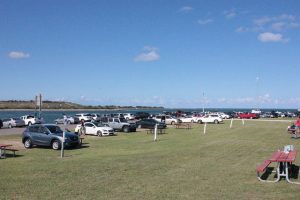
Unfortunately, I had to catch a flight before the next launch window opened after the first one was scrubbed, and I ended up catching the live stream from home on Friday; however, I still don’t regret having rearranged my flights to be there Thursday. Seeing the enthusiasm for the launch first-hand isn’t something I could have fully appreciated from a webcast.
Cars were piled in all over the park by the time the original launch time arrived. People were under sun shades, having picnics, and there were even a few tailgaters – an awesome concept in itself. The only damper is the inability to guarantee the launch will actually happen as scheduled, but since when has that impeded a viable tailgating excuse?
I’m not sure whether this type of activity happens for all launches, but it made me think about some of the discussions and my observations from earlier in the week.
SpaceX at the Space Congress
I also attended the first day’s events for the 44th Space Congress wherein commercial space technology was the primary topic. Bob Cabana, former space shuttle astronaut and current director of the John F. Kennedy Space Center, was the keynote speaker to kick off the event.
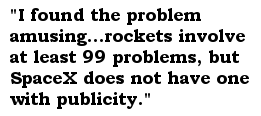 While taking questions, an audience member mentioned that her neighbor thought NASA had been “shut down”, and more audience members concurred that they’d had similar discussions with others. The purpose of the question was to gather Cabana’s opinion on why people weren’t more aware of NASA’s activities, but he didn’t entirely have an answer. I later overheard him speaking to someone else about how they were doing so many “great things” and didn’t understand why people weren’t more aware of them. As a SpaceX enthusiast, of course, I found the problem amusing. I mean, rockets involve at least 99 problems, but SpaceX does not have one with publicity. [Sorry, I had to.]
While taking questions, an audience member mentioned that her neighbor thought NASA had been “shut down”, and more audience members concurred that they’d had similar discussions with others. The purpose of the question was to gather Cabana’s opinion on why people weren’t more aware of NASA’s activities, but he didn’t entirely have an answer. I later overheard him speaking to someone else about how they were doing so many “great things” and didn’t understand why people weren’t more aware of them. As a SpaceX enthusiast, of course, I found the problem amusing. I mean, rockets involve at least 99 problems, but SpaceX does not have one with publicity. [Sorry, I had to.]
However, I still questioned why SpaceX was having an awareness impact on space travel that NASA, in all its social media, outreach efforts, and resources couldn’t seem to mirror. Was it that the technology SpaceX was developing more reminiscent of Hollywood and science fiction? Was it all just better marketing overall? Better video music?
Cue the First Panel
After more questions and a short break, the panel on the progress being made in NASA’s Commercial Crew program began with guests Danom Buck from Boeing and Benji Reed from SpaceX.
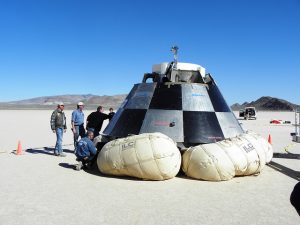
Boeing’s Commercial Crew capsule, CST-100 Starliner. Credit: BLM Nevada under CC by 2.0.
The Commercial Crew program involves the development of the next generation of transport technology for human space travel to and from the International Space Station (and eventually beyond). Or in other words, it’s the program to get America launching people from American soil again rather than buying rocket seats from the Russians.
The overall panel discussion was interesting, but I will admit that I kept waiting for Boeing to get to the “good” part. 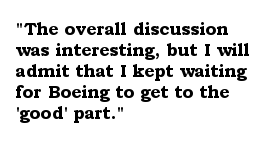 As a member of the general public, my interpretation of their technology was that it was a reworked version of the capsules used on the Apollo program and not much else. Their landing system consisted of high-speed-impact capable air bags versus SpaceX’s propulsive landing, i.e., “hovering”, Dragon capsule.
As a member of the general public, my interpretation of their technology was that it was a reworked version of the capsules used on the Apollo program and not much else. Their landing system consisted of high-speed-impact capable air bags versus SpaceX’s propulsive landing, i.e., “hovering”, Dragon capsule.
While I understand that there are significant improvements in the works with Boeing’s craft, I know I’m not the only one to be unmoved by the lack of apparent novelty in the landing system, particularly because I had recently seen this video of Elon Musk responding to an MIT student’s question comparing SpaceX’s system to Boeing’s:
https://youtu.be/PULkWGHeIQQ?t=48m7s
I kept waiting for the right question to break down the professionalism between the two company representatives (“Fight! Fight! Fight!”), but alas, nothing of the sort happened. I wasn’t entirely convinced that Danum was very excited about Boeing’s technology, either. Maybe I wasn’t being fair to Boeing. After all, Benji’s presentation began with this familiar SpaceX recap video:
Crossover Landing Technology Between Dragon and Falcon 9
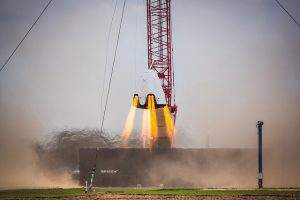
Credit: SpaceX
I did get a chance to ask Benji my own question wherein I inquired about how much technology crosses over between the Dragon capsule’s propulsive landing system and the Falcon 9’s first stage landing system. I was curious whether it was mostly just software sharing since landing the crafts were likely to use similar calculations, but the equipment involved was too different to be relatable.
His response consisted of an explanation about how the development environment at SpaceX is set up to encourage collaboration among systems engineers (open floor layout, connected teams next to one another). Implied answer: He either wasn’t sure specifically but assumed there was some crossover, or he knew some specifics, but wasn’t going to give them for one reason or another. Or perhaps it was some mix of the two.
Cue Lunch and the Next Panel
The speaker during lunch was Col. Eric Krystkowiak, the 45th Space Wing Launch Group Commander. The 45th Space Wing Launch Group is located at Patrick Air Force Base in Cape Canaveral, Florida where the May 27th Falcon 9 lifted off from. The first Falcon 9 ground landing also took place there, something Col. Krystkowiak spoke about during his presentation: “They’re thinking…still can’t believe the Air Force let us do that.”
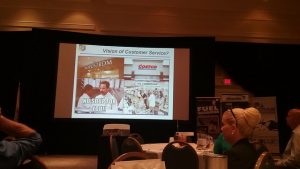
The Air Force’s customer service considerations.
As a lifelong Air Force brat, I may have been partial in my reception to the talk due to the familiar social gathering “zone” it reminded me of.
The presentation format and overall humor were very good (isn’t anything that quotes Seinfeld?), and although they have to remain impartial as government representatives, it certainly felt as though the Air Force genuinely liked the SpaceX team and was leaning towards their business model to support in their commercial spaceflight customer service role moving forward. Perhaps they just appreciate SpaceX’s wherewithal and determination to push through bureaucracy to really enable innovation.
Oh, and I think someone asked about the lawsuit SpaceX filed against the Air Force, but I don’t remember the specifics of either the question or the answer. Hey, it was lunch time!
The Journey Ends
Jumping forward again to the original Thursday launch date, once it was clear the launch was not happening before my flight home (shout out to the very nice lady listening to the AM radio updates), I had to book it to the airport. Then, ironically, it turned out my Uber driver had spent seventeen years as a defense contractor with Raytheon working on satellite technologies.
It really was a space kind of week!
Space geek that I am, I took the opportunity to have him provide first hand insight into what that type of job was like. I was particularly interested in why contract work like that always went over time and over budget. His answer was that essentially, when NASA approaches its contractors, they are asking for things to be done that have never been done before, thus it’s hard to predict exactly what the future will hold as far as the development of the technology.
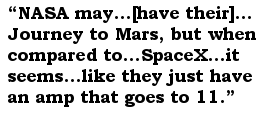 Fair enough, but once again, SpaceX shines here. There’s never been a company quite like them before, doing quite the things they’re doing in quite the way they’re doing them.
Fair enough, but once again, SpaceX shines here. There’s never been a company quite like them before, doing quite the things they’re doing in quite the way they’re doing them.
Maybe just being first has its merits? After all, history tends to reward the winners. Most Americans don’t know who the first American in space was, but they know the Russians beat us there to begin with, and they know we beat everyone to the Moon. Then again, Sally Ride tends to be mistaken by Americans as the first woman in space, but Russian Valentina Tereshkova was actually first.
The question of what makes SpaceX so different in marketing space technology is still a difficult one for me as my personal reasons for admiring their progress has little to do with the aesthetics of the achievements. I admire the true progress they’re making and the relatability of what they’re developing to what their larger goals are.
NASA may be truly making progress towards a “Journey to Mars”, but when compared to the advancements SpaceX has achieved, it seems more like thus far, they just have a guitar amp that “goes to 11”.
Thoughts, anyone?
Author’s Note: I’ve uploaded more pics of the Space Congress and the park on launch day to my Flickr account. Nothing spectacular – just FYI.
Elon Musk
Tesla investors will be shocked by Jim Cramer’s latest assessment
Jim Cramer is now speaking positively about Tesla, especially in terms of its Robotaxi performance and its perception as a company.
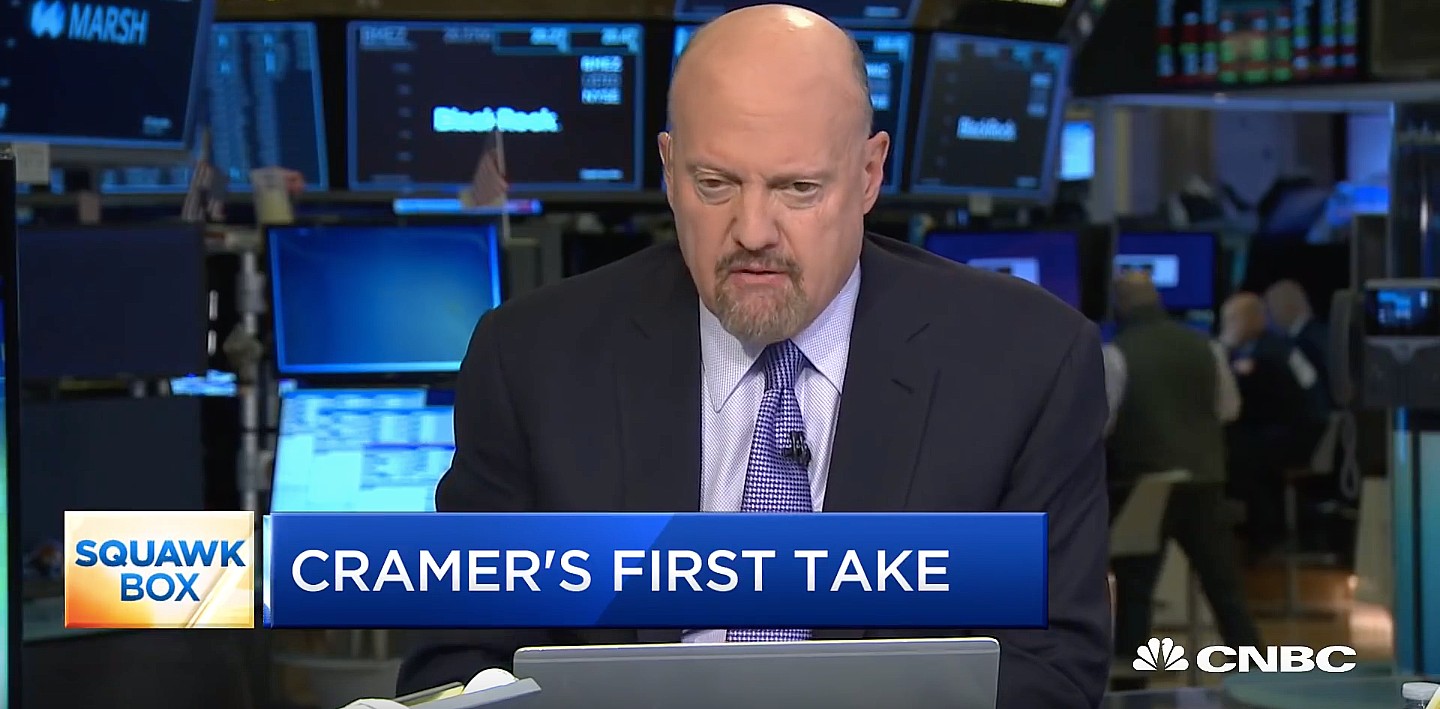
Tesla investors will be shocked by analyst Jim Cramer’s latest assessment of the company.
When it comes to Tesla analysts, many of them are consistent. The bulls usually stay the bulls, and the bears usually stay the bears. The notable analysts on each side are Dan Ives and Adam Jonas for the bulls, and Gordon Johnson for the bears.
Jim Cramer is one analyst who does not necessarily fit this mold. Cramer, who hosts CNBC’s Mad Money, has switched his opinion on Tesla stock (NASDAQ: TSLA) many times.
He has been bullish, like he was when he said the stock was a “sleeping giant” two years ago, and he has been bearish, like he was when he said there was “nothing magnificent” about the company just a few months ago.
Now, he is back to being a bull.
Cramer’s comments were related to two key points: how NVIDIA CEO Jensen Huang describes Tesla after working closely with the Company through their transactions, and how it is not a car company, as well as the recent launch of the Robotaxi fleet.
Jensen Huang’s Tesla Narrative
Cramer says that the narrative on quarterly and annual deliveries is overblown, and those who continue to worry about Tesla’s performance on that metric are misled.
“It’s not a car company,” he said.
He went on to say that people like Huang speak highly of Tesla, and that should be enough to deter any true skepticism:
“I believe what Musk says cause Musk is working with Jensen and Jensen’s telling me what’s happening on the other side is pretty amazing.”
Tesla self-driving development gets huge compliment from NVIDIA CEO
Robotaxi Launch
Many media outlets are being extremely negative regarding the early rollout of Tesla’s Robotaxi platform in Austin, Texas.
There have been a handful of small issues, but nothing significant. Cramer says that humans make mistakes in vehicles too, yet, when Tesla’s test phase of the Robotaxi does it, it’s front page news and needs to be magnified.
He said:
“Look, I mean, drivers make mistakes all the time. Why should we hold Tesla to a standard where there can be no mistakes?”
It’s refreshing to hear Cramer speak logically about the Robotaxi fleet, as Tesla has taken every measure to ensure there are no mishaps. There are safety monitors in the passenger seat, and the area of travel is limited, confined to a small number of people.
Tesla is still improving and hopes to remove teleoperators and safety monitors slowly, as CEO Elon Musk said more freedom could be granted within one or two months.
News
Tesla launches ultra-fast V4 Superchargers in China for the first time
Tesla has V4 Superchargers rolling out in China for the first time.
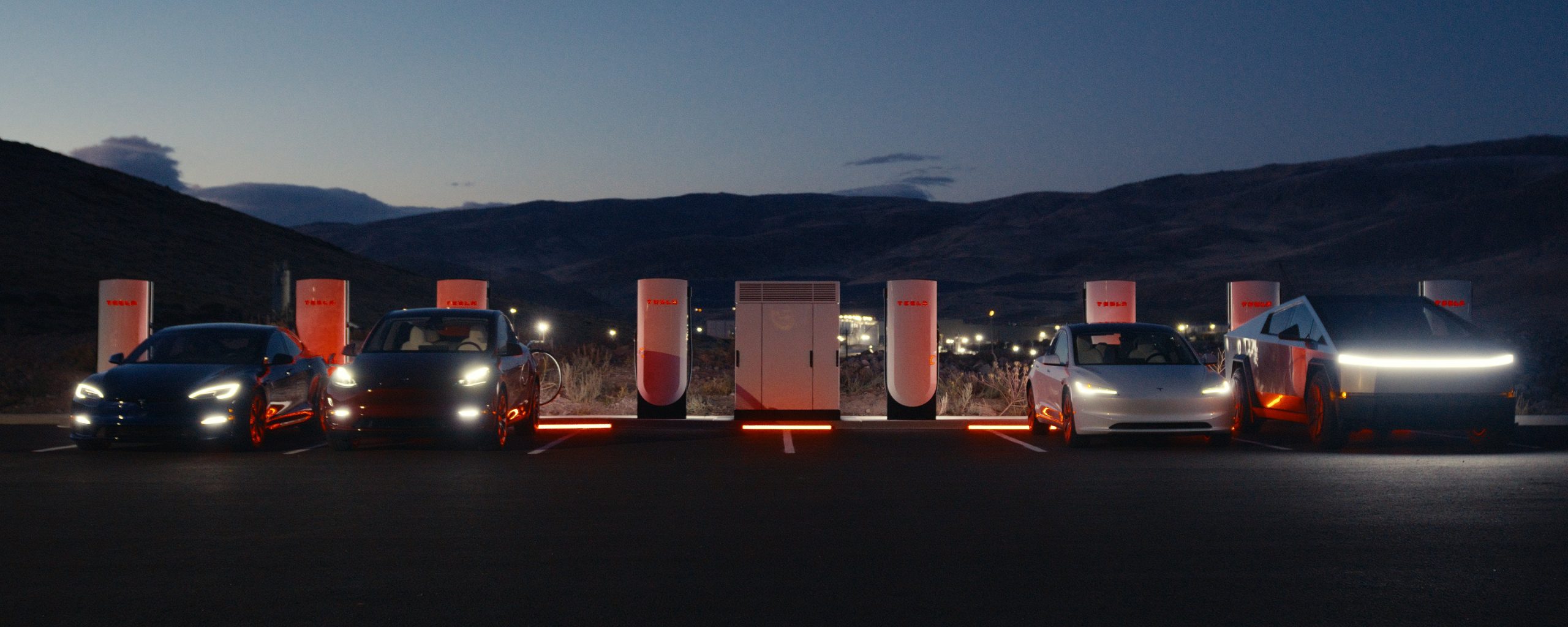
Tesla already has nearly 12,000 Supercharger piles across mainland China. However, the company just initiated the rollout of the ultra-fast V4 Superchargers in China for the first time, bringing its quick-charging piles to the country for the first time since their launch last year.
The first batch of V4 Superchargers is now officially up and running in China, the company announced in a post on Chinese social media outlet Weibo today.
The company said in the post:
“The first batch of Tesla V4 Superchargers are online. Covering more service areas, high-speed charging is more convenient, and six-layer powerful protection such as rain and waterproof makes charging very safe. Simultaneously open to non-Tesla vehicles, and other brands of vehicles can also be charged. There are more than 70,000 Tesla Superchargers worldwide. The charging network layout covers 100% of the provincial capitals and municipalities in mainland China. More V4 Superchargers will be put into use across the country. Optimize the charging experience and improve energy replenishment efficiency. Tesla will accompany you to the mountains, rivers, lakes, and seas with pure electricity!”
The first V4 Superchargers Tesla installed in China are available in four cities across the country: Shanghai, Zhejiang, Gansu, and Chongqing.
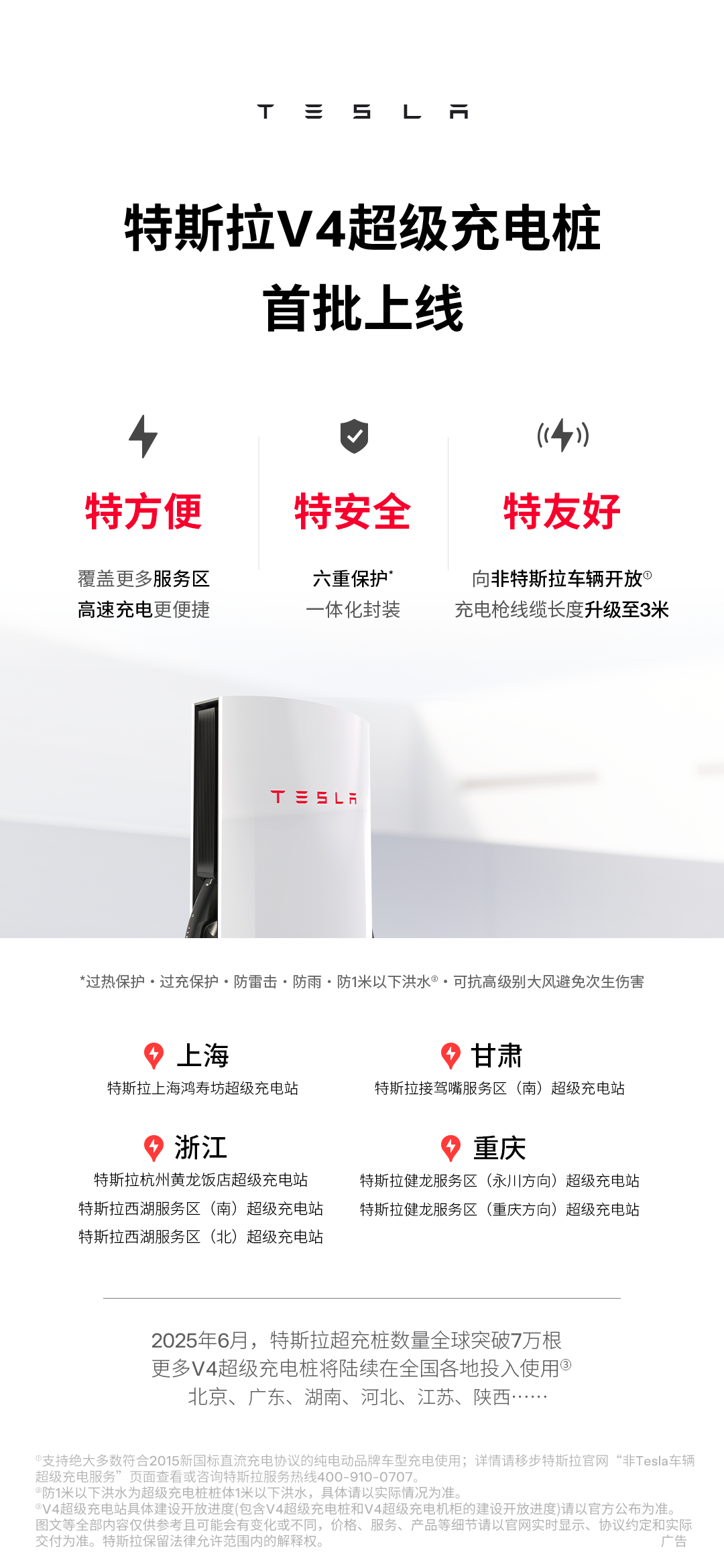
Credit: Tesla China
Tesla has over 70,000 Superchargers worldwide. It is the most expansive and robust EV charging network in the world. It’s the main reason why so many companies have chosen to adopt Tesla’s charging connector in North America and Europe.
In China, some EVs can use Tesla Superchargers as well.
The V4 Supercharger is capable of charging vehicles at speeds of up to 325kW for vehicles in North America. This equates to over 1,000 miles per hour of charging.
Elon Musk
Elon Musk hints at when Tesla could reduce Safety Monitors from Robotaxi
Tesla could be reducing Safety Monitors from Robotaxi within ‘a month or two,’ CEO Elon Musk says.

Elon Musk hinted at when Tesla could begin reducing Safety Monitors from its Robotaxis. Safety Monitors are Tesla employees who sit in the front passenger seat during the driverless rides, and are there to ensure safety for occupants during the earliest rides.
Tesla launched its Robotaxi fleet in Austin last Sunday, and after eight days, videos and reviews from those who have ridden in the driverless vehicles have shown that the suite is safe, accurate, and well coordinated. However, there have been a few hiccups, but nothing that has put anyone’s safety in danger.
A vast majority — close to all of the rides — at least according to those who have ridden in the Robotaxi, have been performed without any real need for human intervention. We reported on what was the first intervention last week, as a Safety Monitor had to step in and stop the vehicle in a strange interaction with a UPS truck.
Watch the first true Tesla Robotaxi intervention by safety monitor
The Tesla and UPS delivery truck were going for the same street parking space, and the Tesla began to turn into it. The UPS driver parallel parked into the spot, which was much smaller than his truck. It seemed to be more of an instance of human error instead of the Robotaxi making the wrong move. This is something that the driverless cars will have to deal with because humans are aggressive and sometimes make moves they should not.
The Safety Monitors have not been too active in the vehicles. After all, we’ve only seen that single instance of an intervention. There was also an issue with the sun, when the Tesla braked abnormally due to the glare, but this was an instance where the car handled the scenario and proceeded normally.
With the Robotaxi fleet operating impressively, some are wondering when Tesla will begin scaling back both the Safety Monitors and Teleoperators that it is using to ensure safety with these early rides.
CEO Elon Musk answered the inquiry by stating, “As soon as we feel it is safe to do so. Probably within a month or two.”
As soon as we feel it is safe to do so.
Probably within a month or two. We continue to improve the Tesla AI with each mile driven.
— Elon Musk (@elonmusk) June 30, 2025
Musk’s response seems to confirm that there will be fewer Teleoperators and Safety Monitors in the coming months, but there will still be some within the fleet to ensure safety. Eventually, that number will get to zero.
Reaching a point where Tesla’s Robotaxi is driverless will be another significant milestone for the company and its path to fully autonomous ride-sharing.
Eventually, Tesla will roll out these capabilities to consumer-owned vehicles, offering them a path to generate revenue as their car operates autonomously and completes rides.
For now, Tesla is focusing on perfecting the area of Austin where it is currently offering driverless rides for just $4.20 to a small group of people.
-

 News5 days ago
News5 days agoTesla Robotaxi’s biggest challenge seems to be this one thing
-
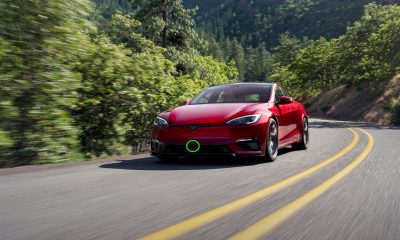
 News2 weeks ago
News2 weeks agoTesla confirms massive hardware change for autonomy improvement
-

 Elon Musk2 weeks ago
Elon Musk2 weeks agoElon Musk slams Bloomberg’s shocking xAI cash burn claims
-
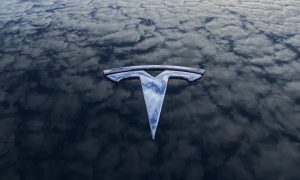
 News2 weeks ago
News2 weeks agoTesla features used to flunk 16-year-old’s driver license test
-

 News2 weeks ago
News2 weeks agoTesla China roars back with highest vehicle registrations this Q2 so far
-

 News2 weeks ago
News2 weeks agoTexas lawmakers urge Tesla to delay Austin robotaxi launch to September
-

 News2 weeks ago
News2 weeks agoTesla dominates Cars.com’s Made in America Index with clean sweep
-

 News2 weeks ago
News2 weeks agoTesla’s Grok integration will be more realistic with this cool feature





















